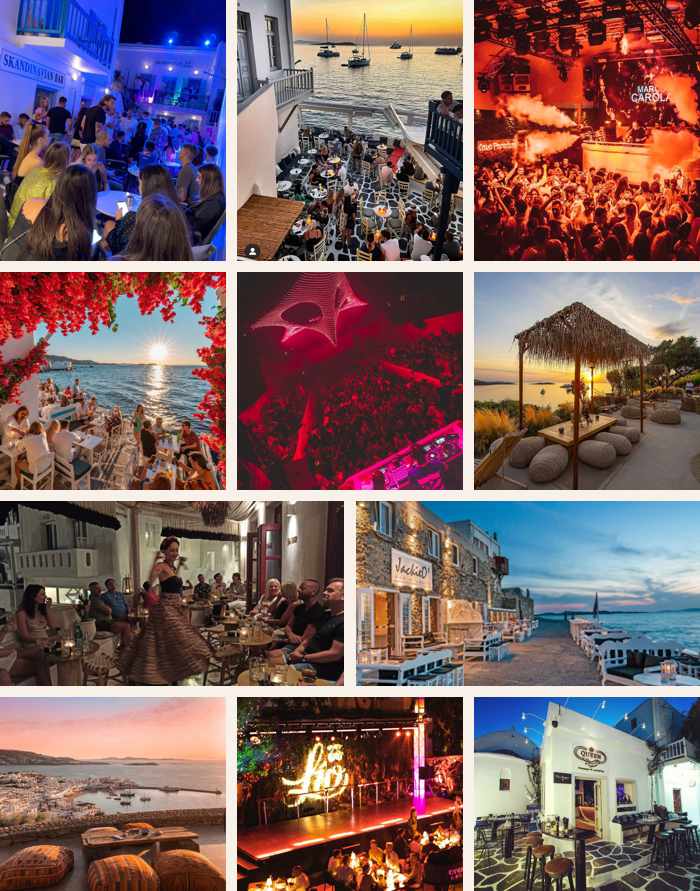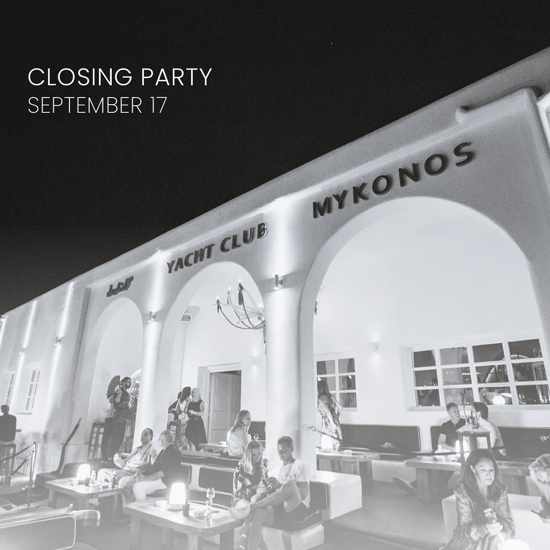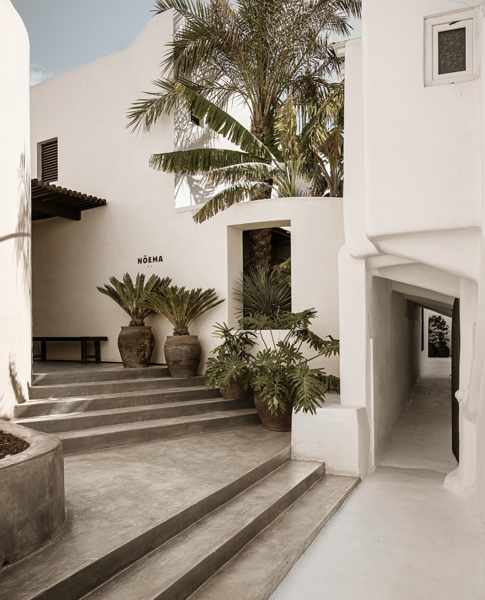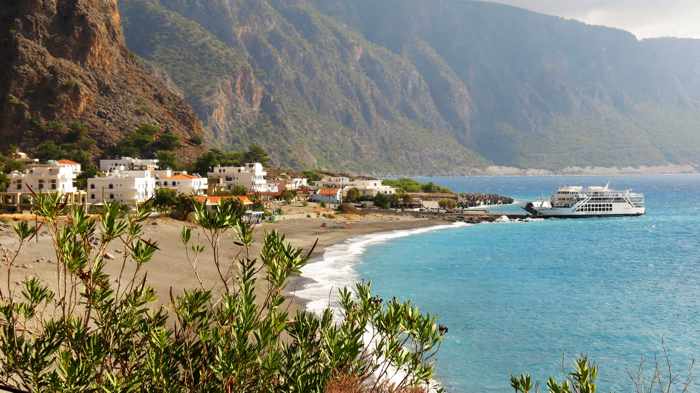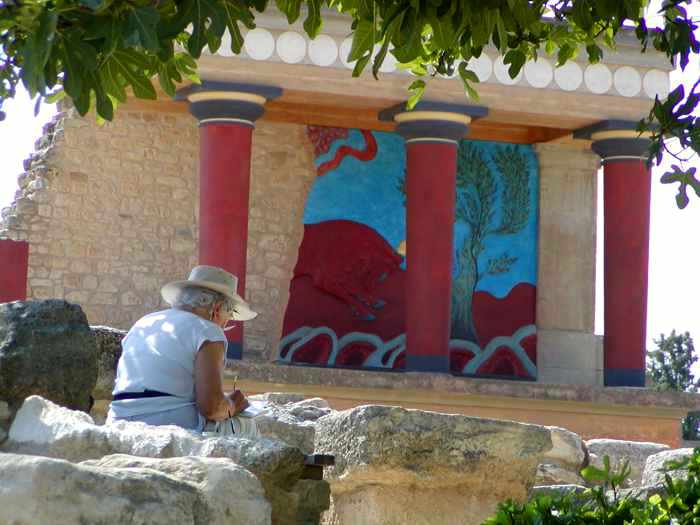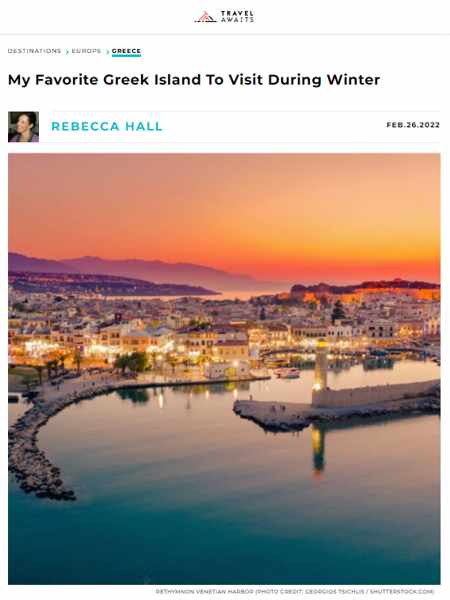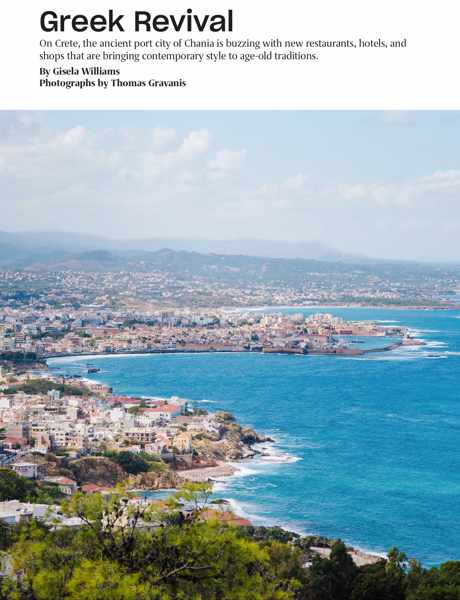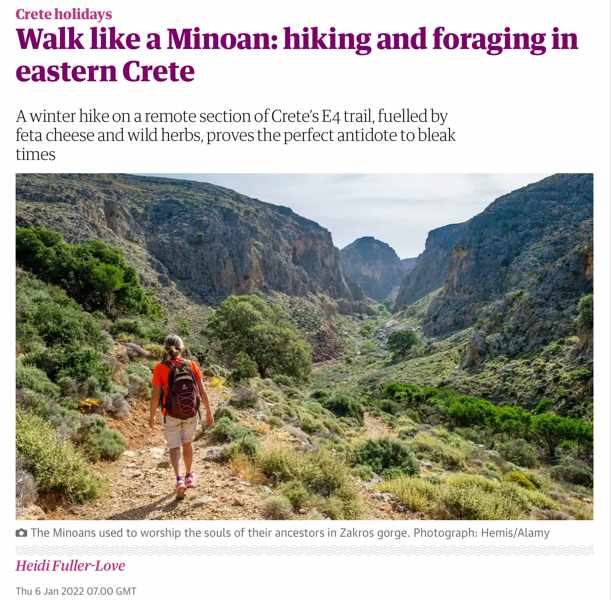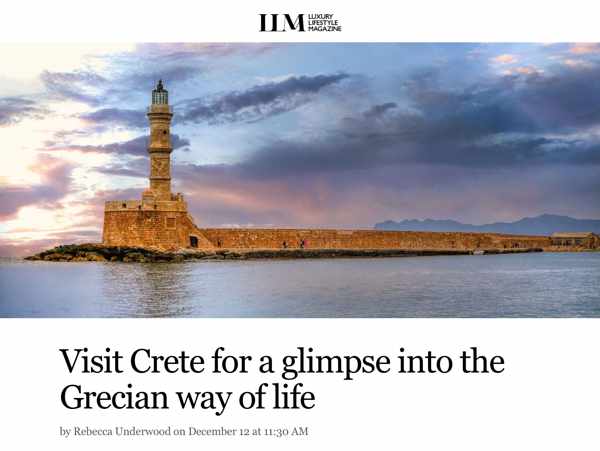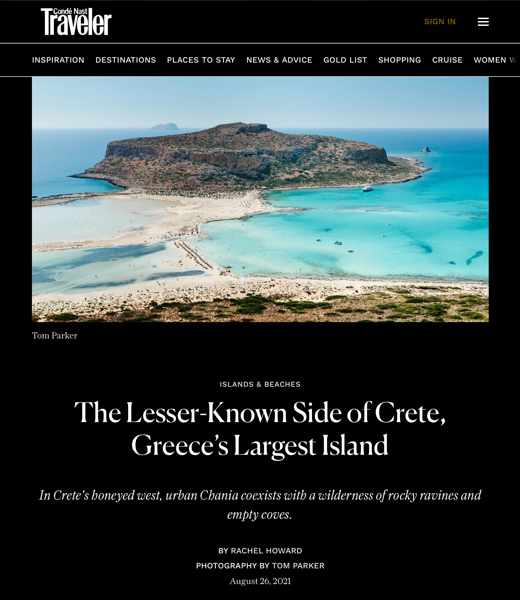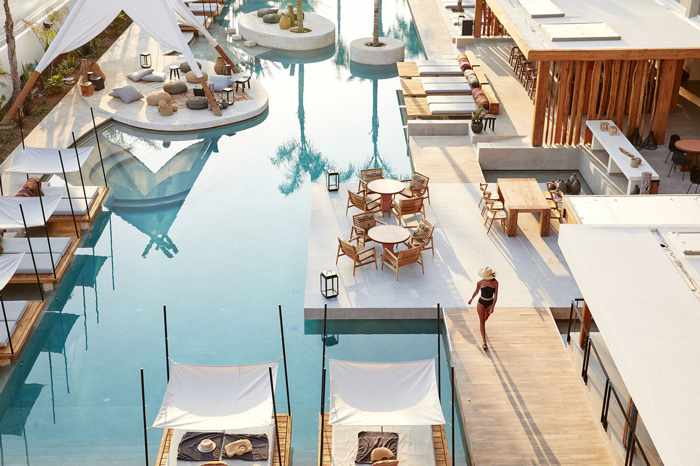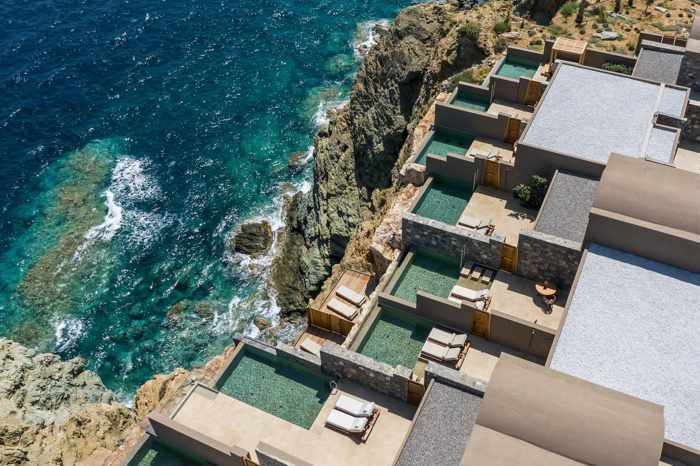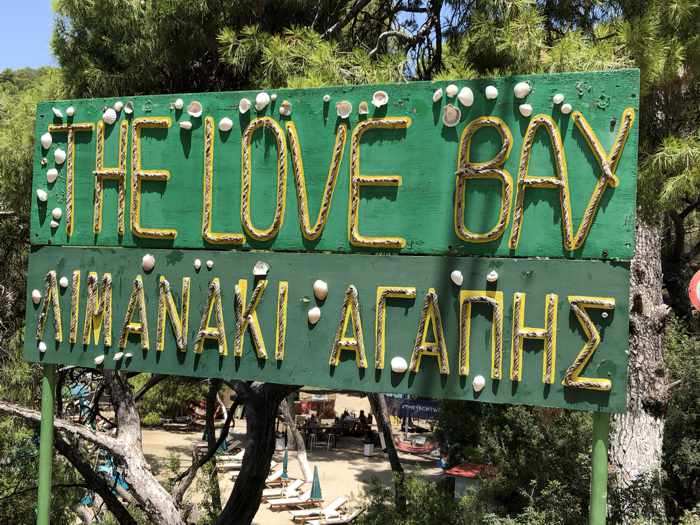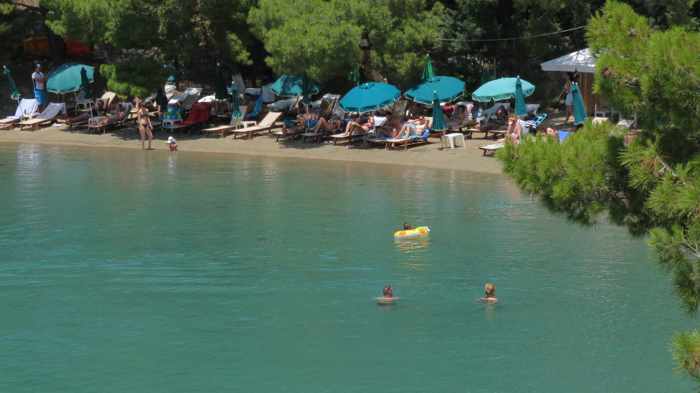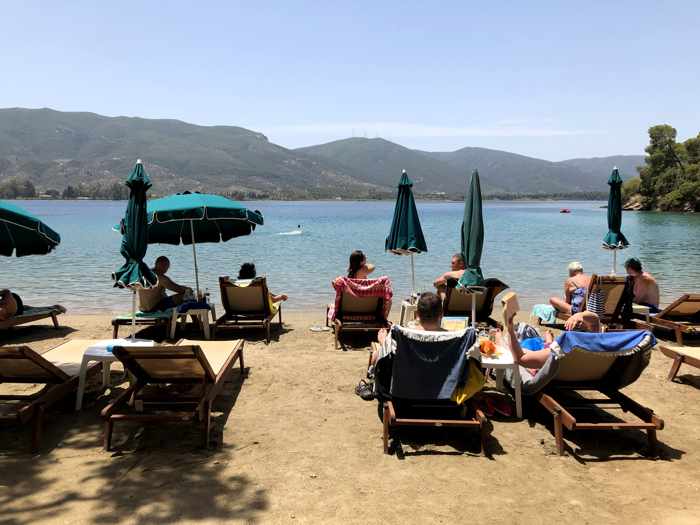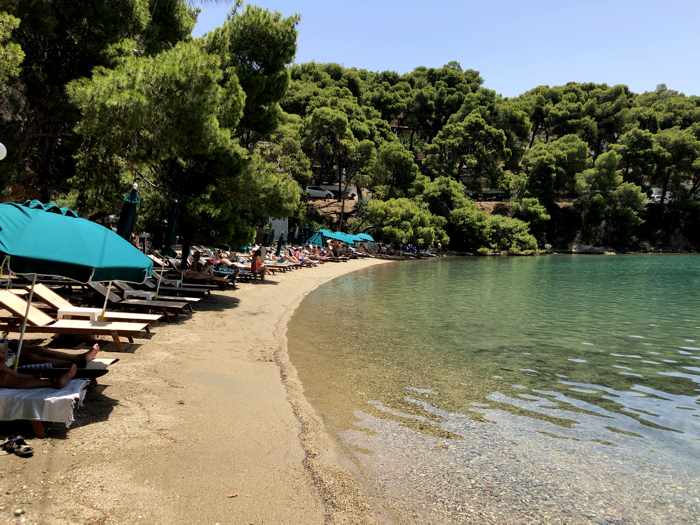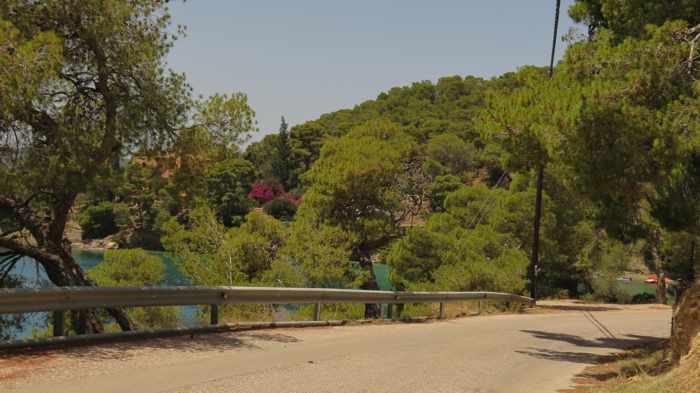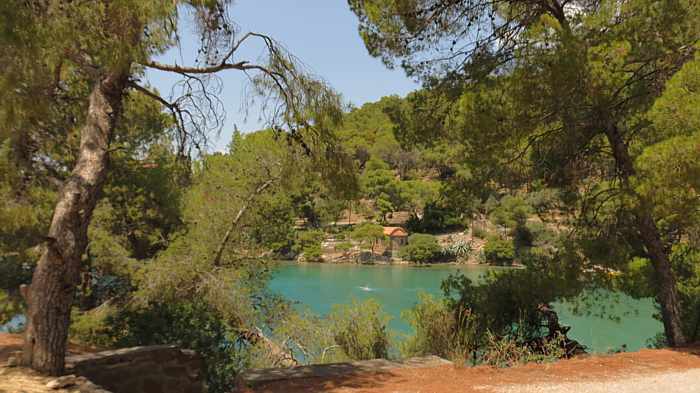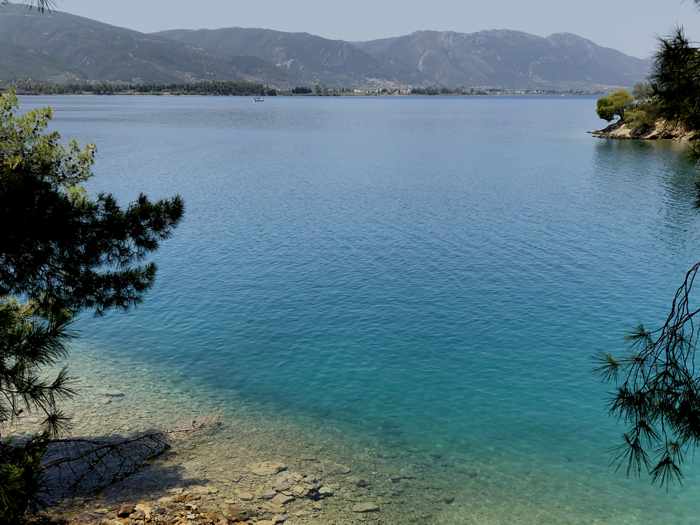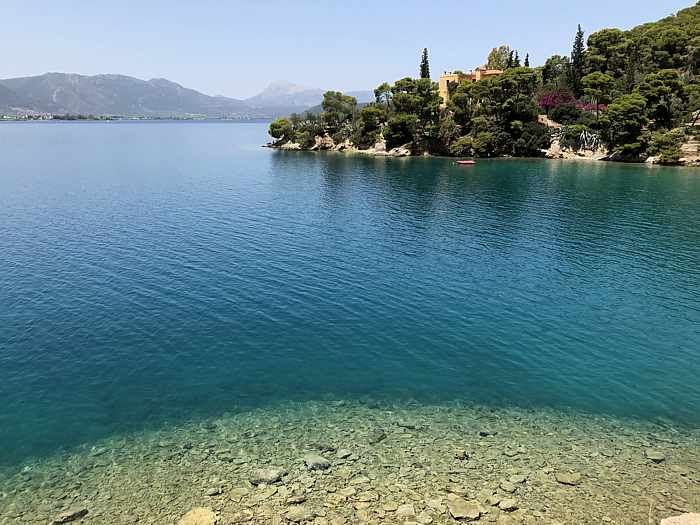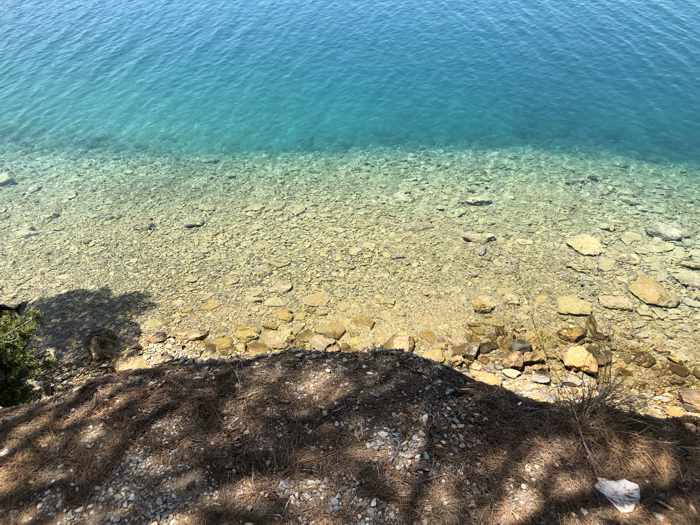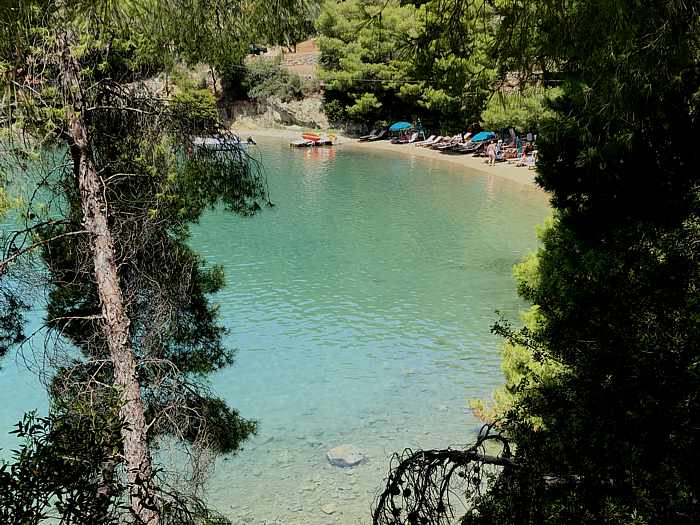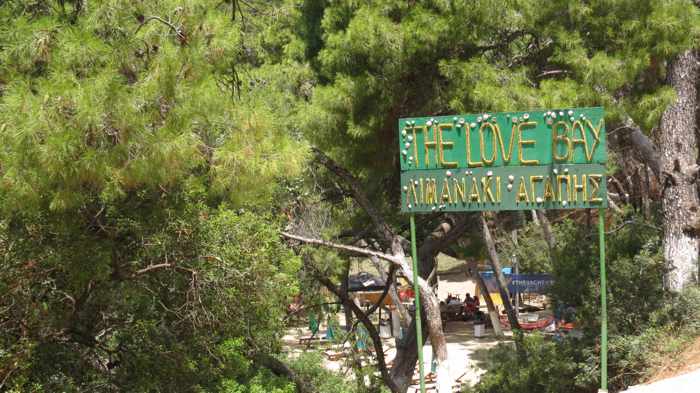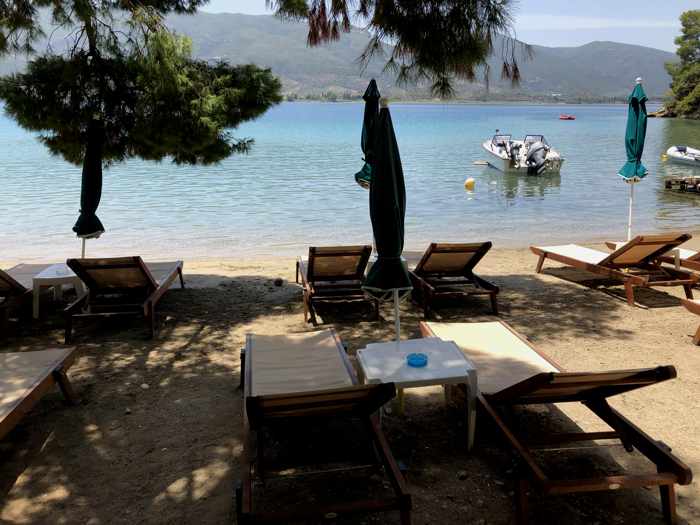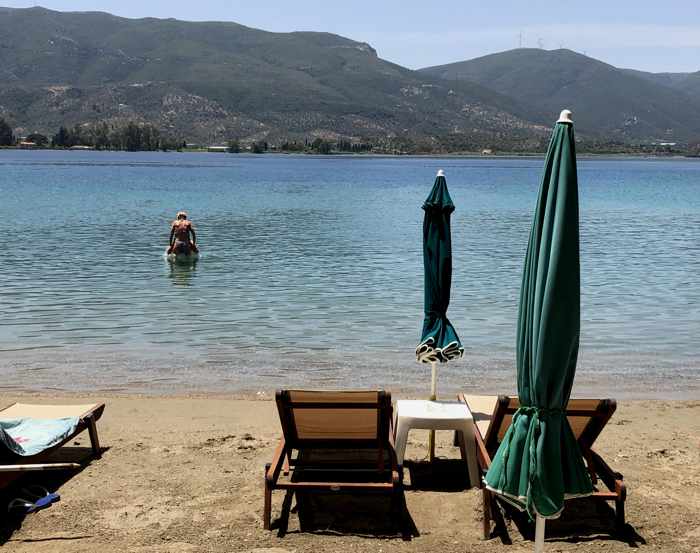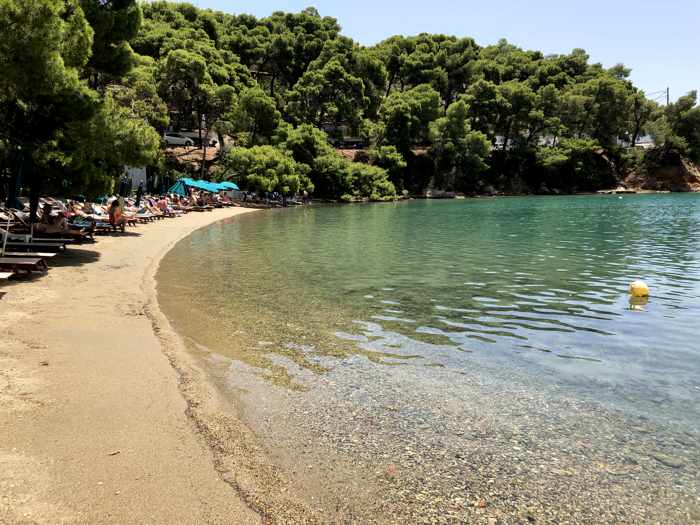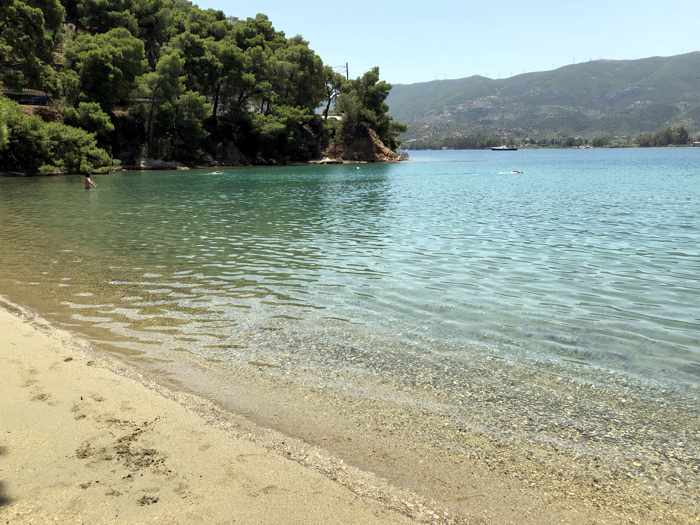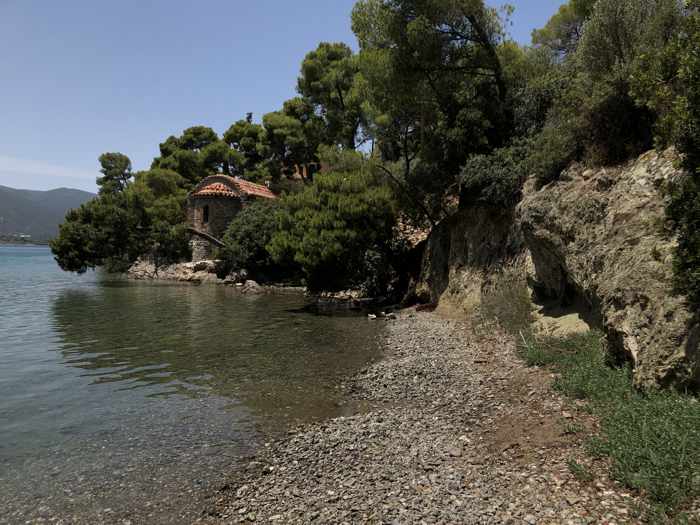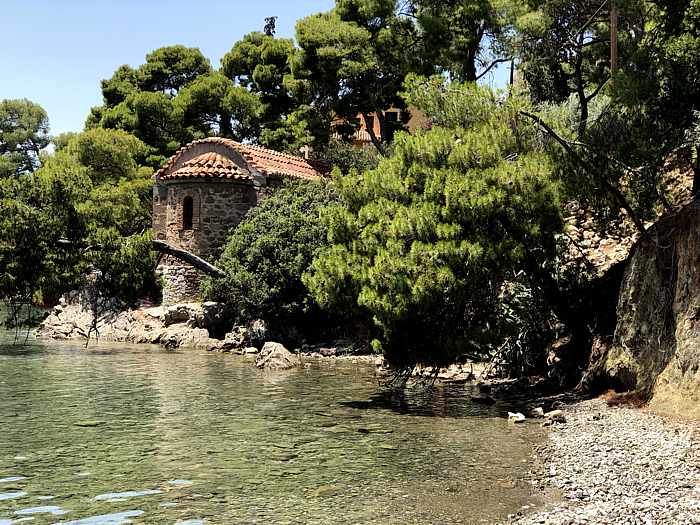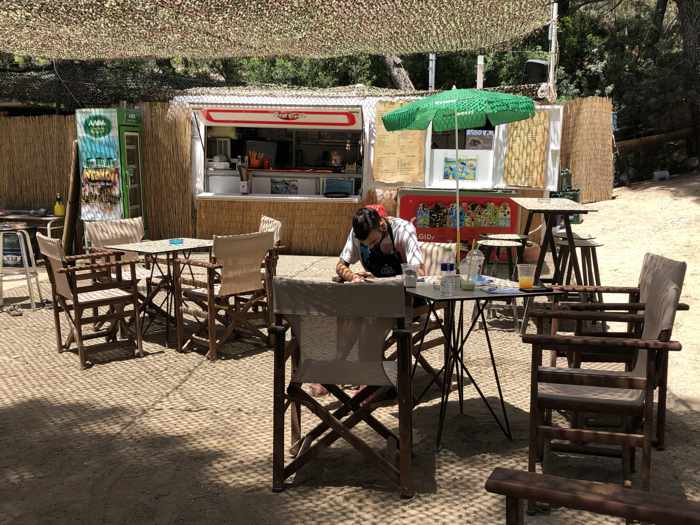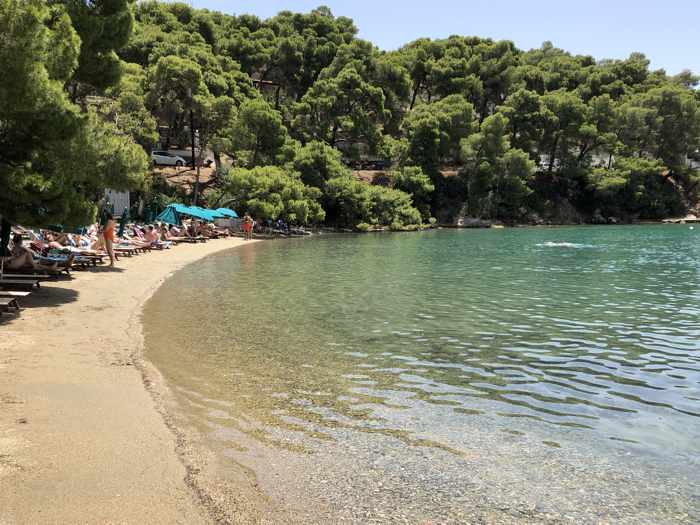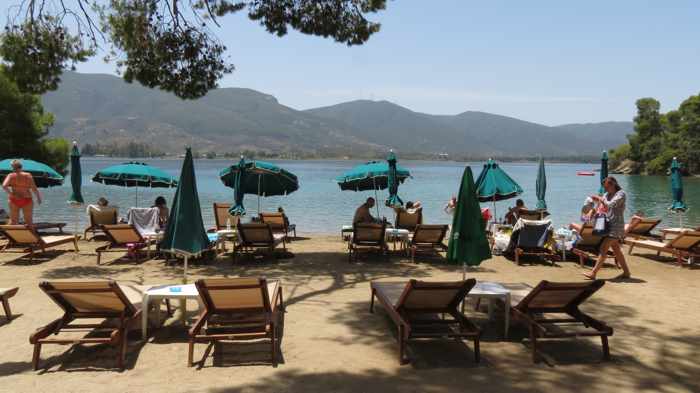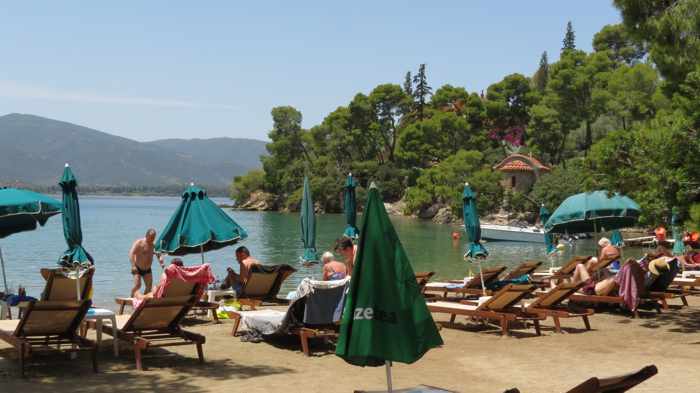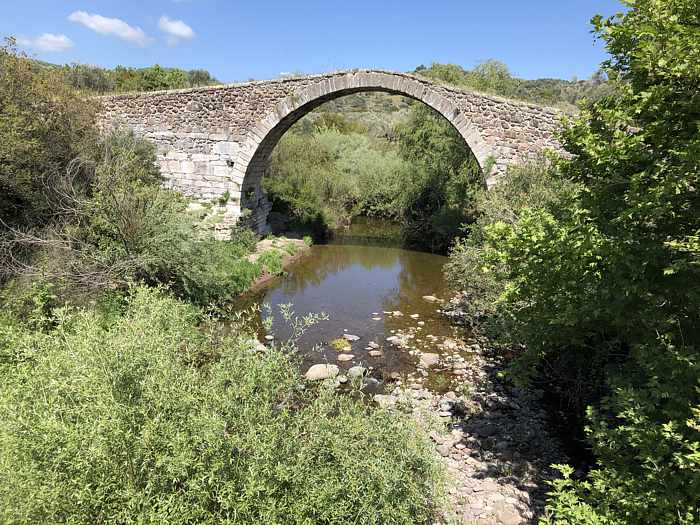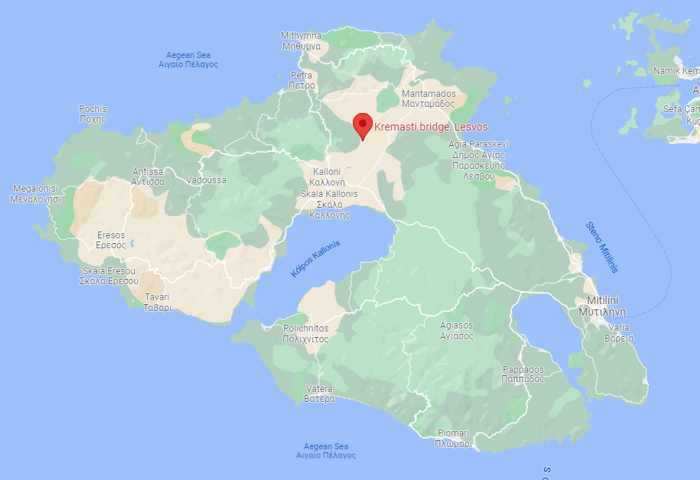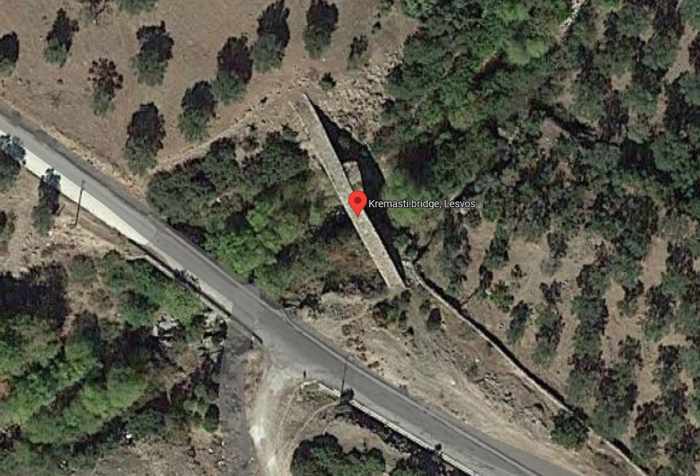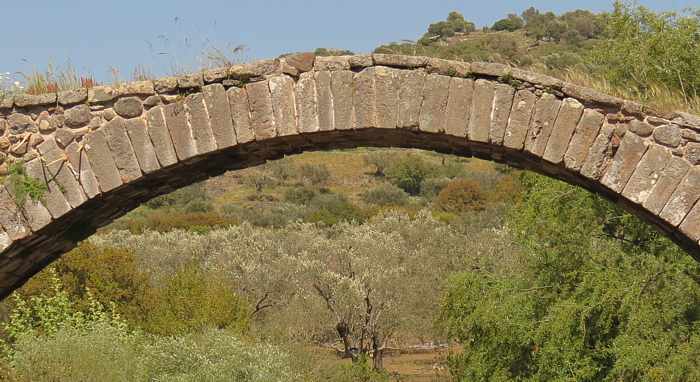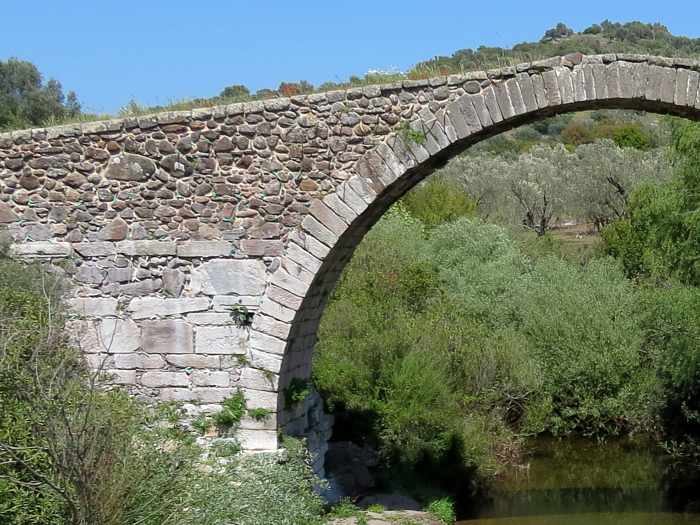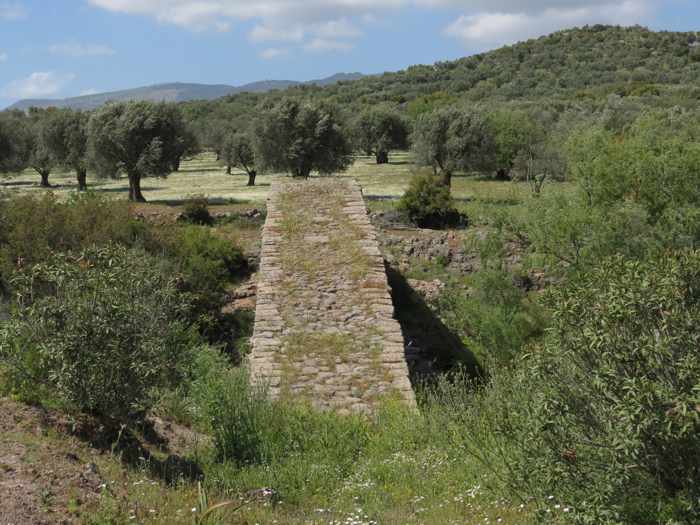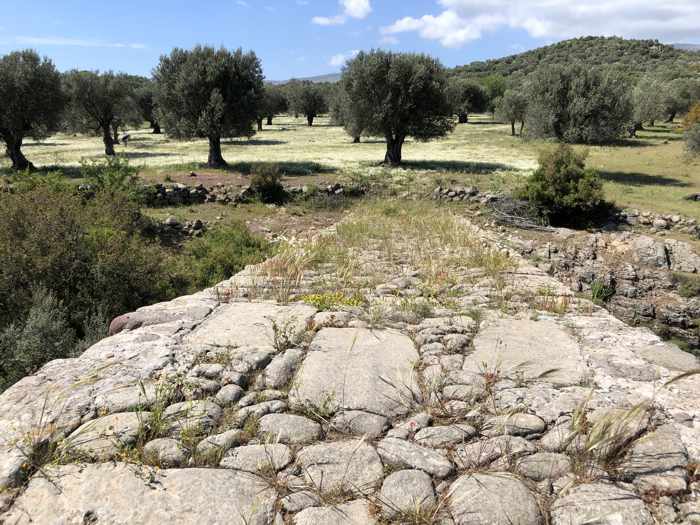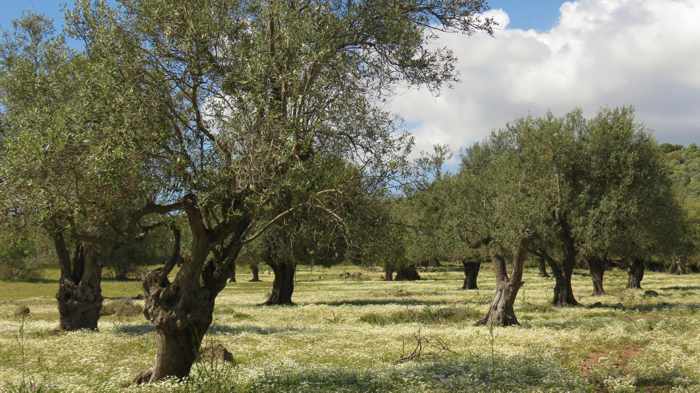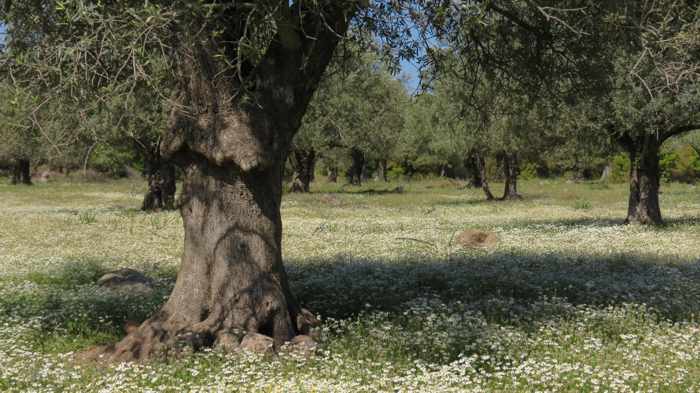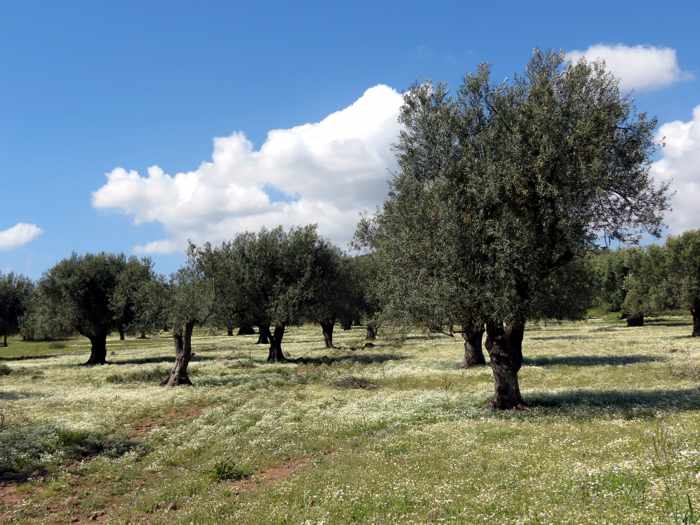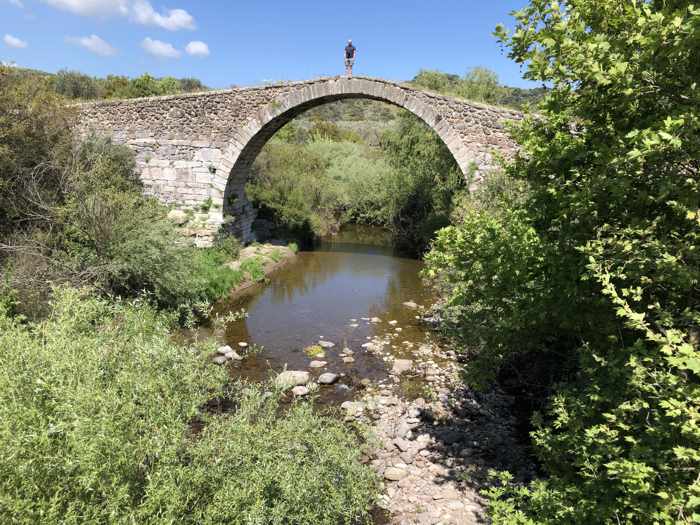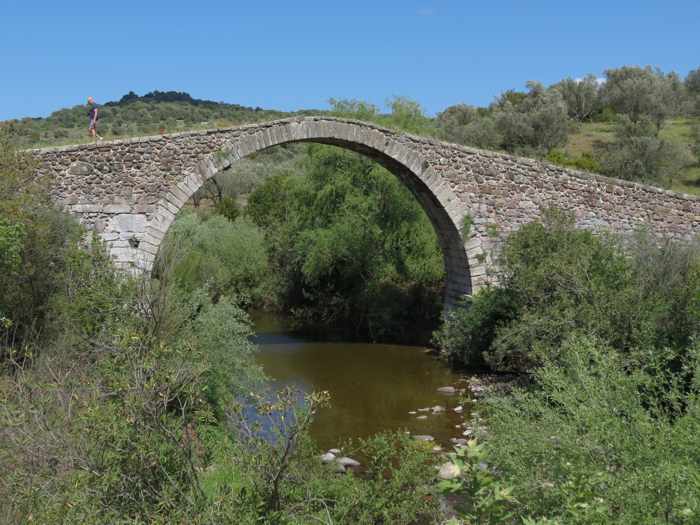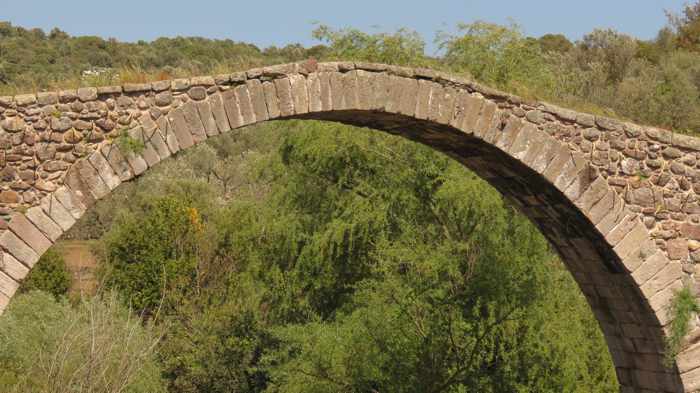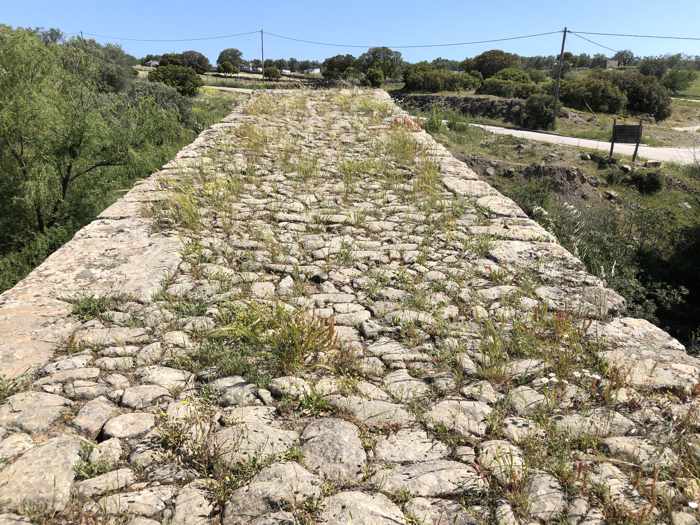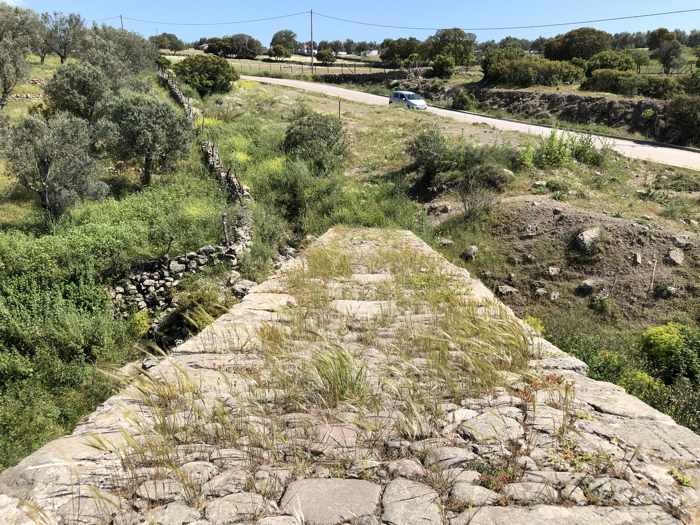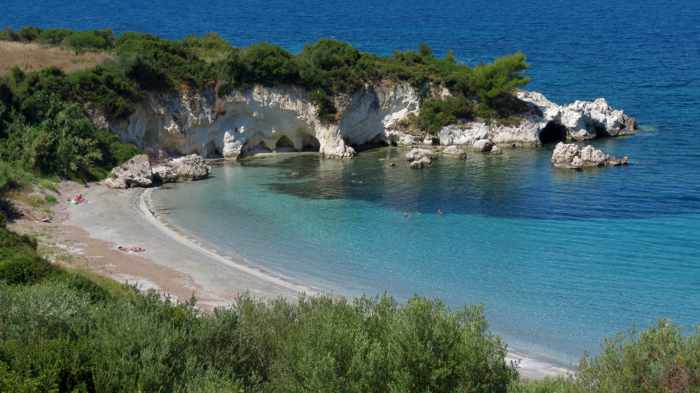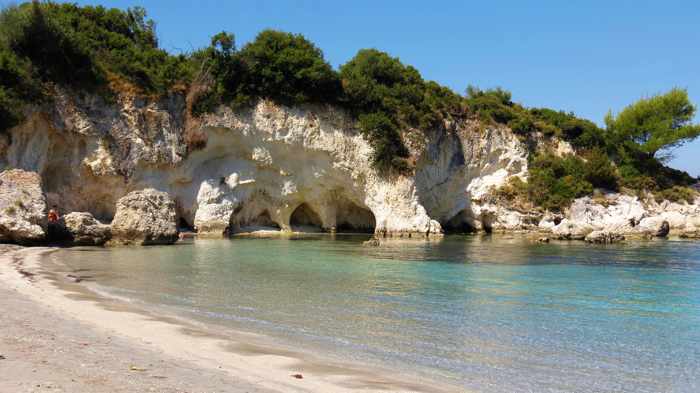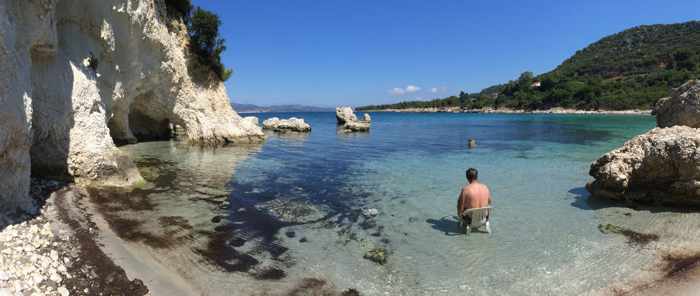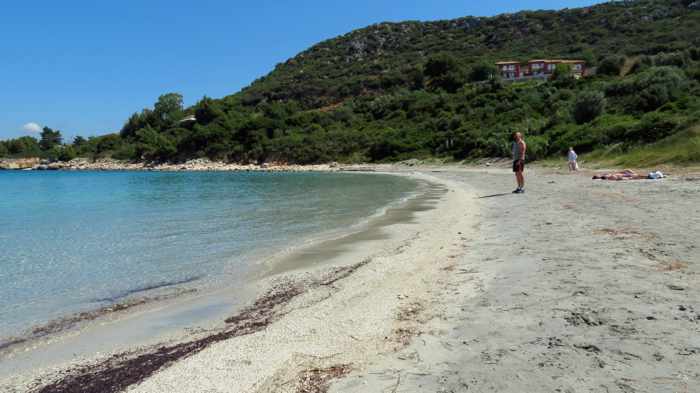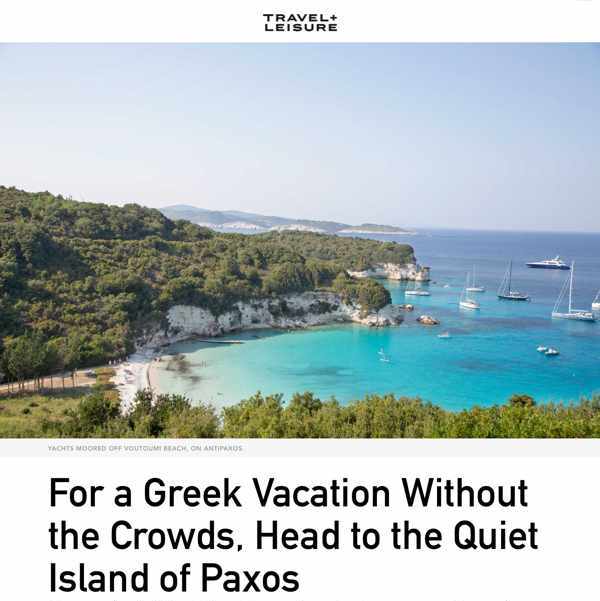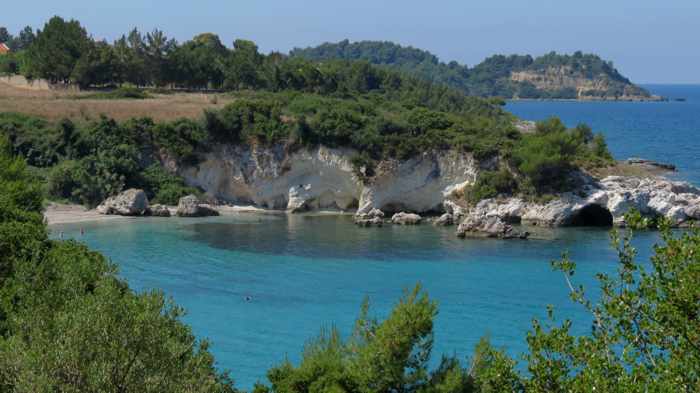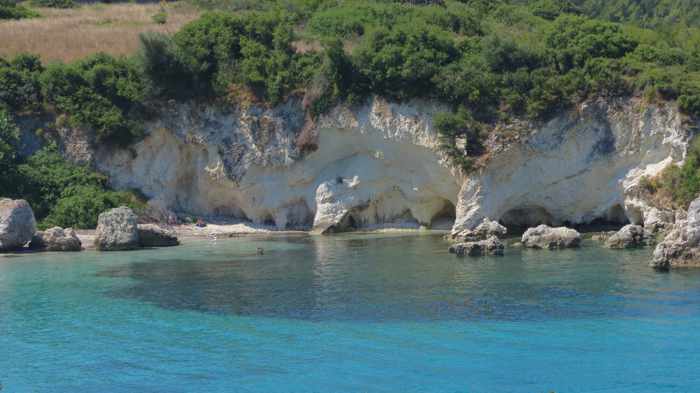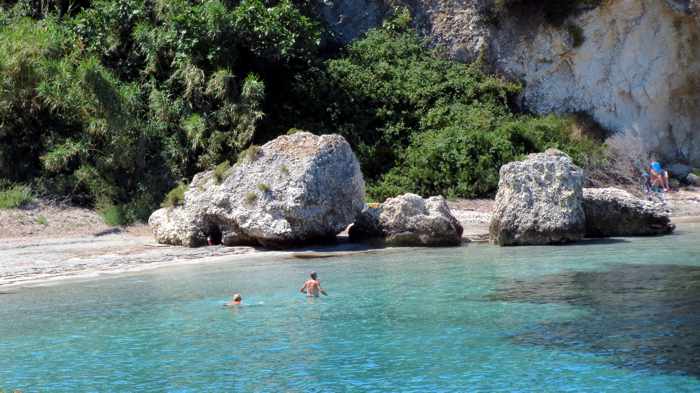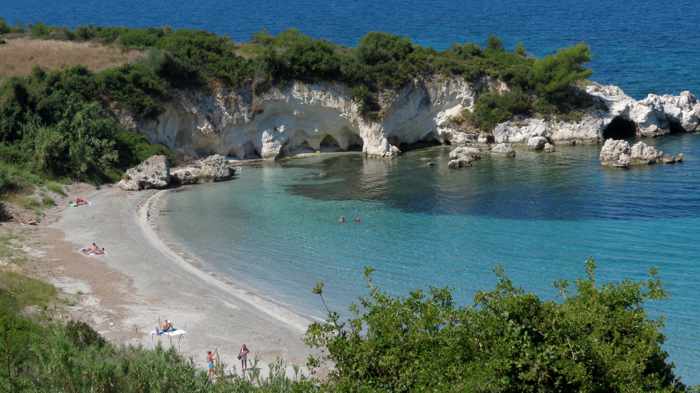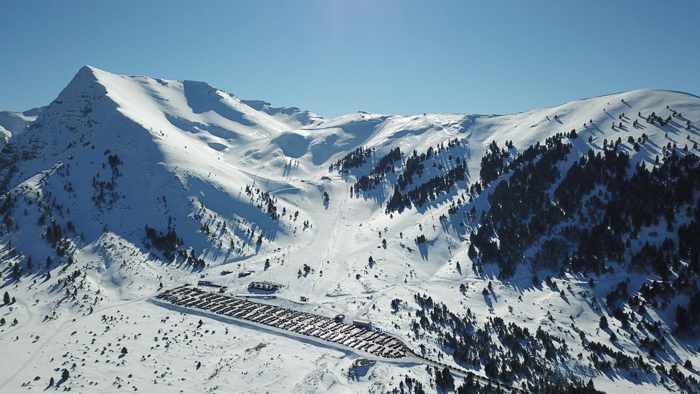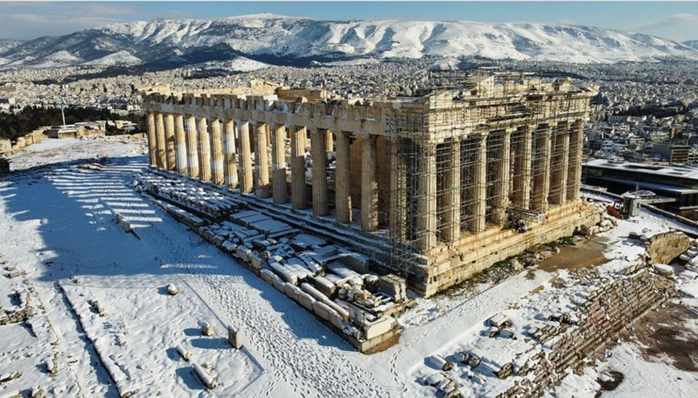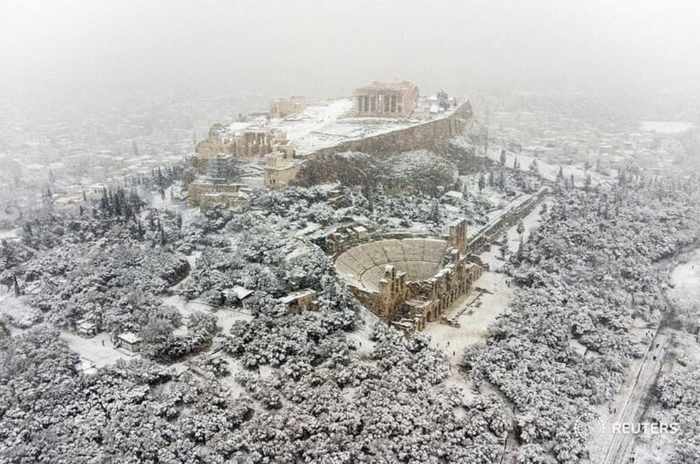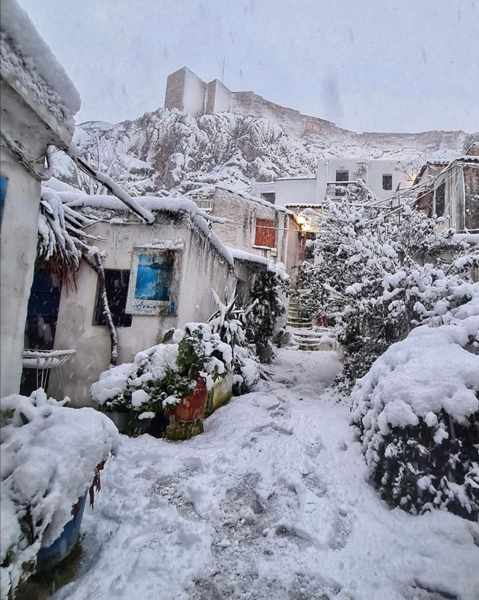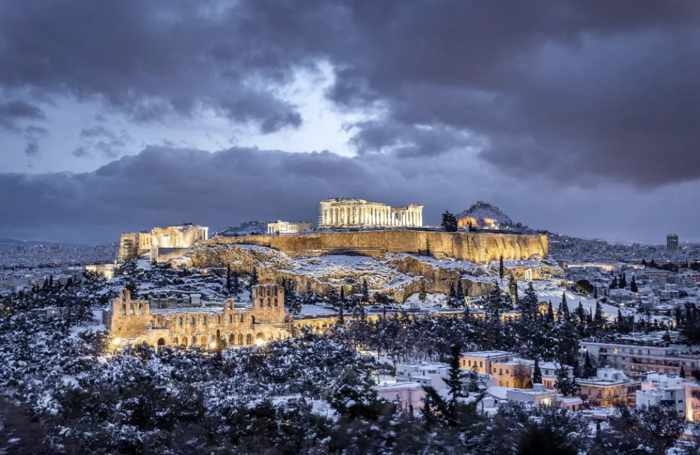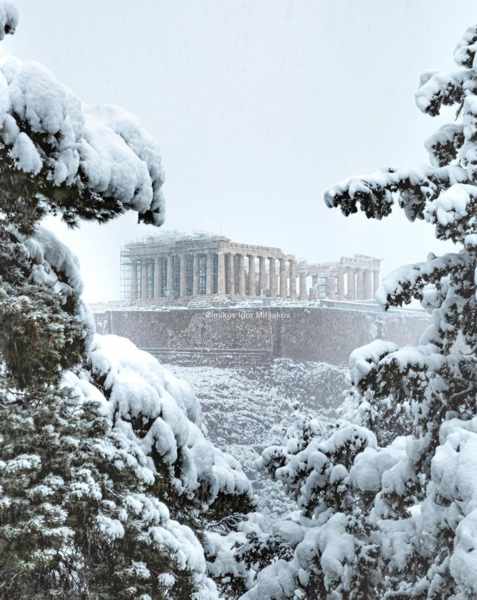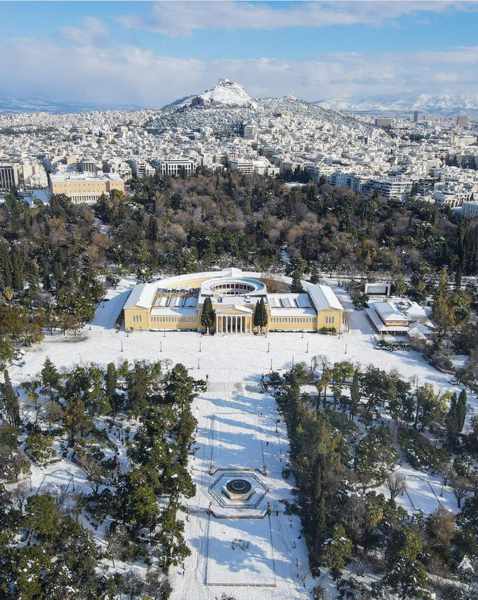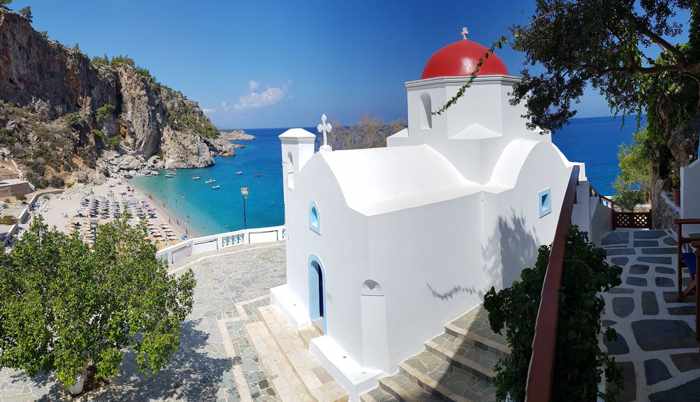
Kyra Panagia church is an island icon and one of the most popular tourist attractions on Karpathos. This photo is one of many posted in galleries in the Visitor section of the Municipality of Karpathos website.
Dodecanese delights: Will you be travelling to one or more of the Dodecanese islands this year? Or are you just wondering whether this part of Greece might be the right place for you and your family or friends to visit on vacation? If so, keep scrolling through this post so you can bookmark links we have compiled for a variety of Dodecanese island travel articles that have appeared in magazines, newspapers and websites in recent months.
The Dodecanese, a group of more than 15 islands in the southeast Aegean Sea, have long been a popular holiday destination. Rhodes and Kos have always been the best-known and busiest islands of the bunch, but less-familiar isles in the chain have been gaining increased attention as pandemic-weary travellers seek holiday locations that offer authentic and traditional island experiences with fewer crowds and tourist trappings.
Articles in major international news publications, and reviews and reports posted on influential travel and lifestyle websites, have also been bringing lesser-known Dodecanese islands to the forefront.
Take Karpathos, Kasos, Kastellorizo, Halki and Symi as examples. They aren’t exactly household names that most people planning a first-time trip to Greece would instantly recognize, but more people around the world are aware of them now, thanks to a photo-packed travel profile that USA Today published just before Christmas 2021. The article, featuring 46 photos of scenery, attractions and residents from all five of those islands, almost got overlooked during the distractions of the holiday season. But since the beginning of this year, we have seen it being reposted and shared widely on social media pages, reaching ever-larger audiences — undoubtedly including people trying to decide where they should go for their holiday in Greece this summer.
You’ll find a link to the USA Today travel piece below, along with other interesting and informative articles we have collected and bookmarked for personal reading and vacation research. We think they’ll be useful for other travellers who are either planning trips to the Dodecanese, or are simply curious to read more about the region, since they cover diverse topics including: island descriptions; highlight attractions and activities; recommended places to eat and drink; cool places to stay; personal trip reports; and more. For convenience, we have grouped the articles based on the particular island destinations discussed in each piece.
— Karpathos, Kasos, Halki, Kastellorizo & Symi —

The December 21 2021 article Beyond Santorini and Mykonos: Explore the lesser-known Greek islands is the aforementioned USA Today pictorial report that is circulating on social media pages this month. It’s essentially a gallery of 46 photos, each accompanied by an easy-to-read, one-paragraph caption that provides some insight into the specific island on which each image was shot. All but two of the photos were shot by travel writer/photographer Nick Kontis, who wrote the article text.
_________________________
— Karpathos —

Whenever we come across profiles of Karpathos, like this one from Aegean Airlines’ Blue magazine, we can’t help but shake our heads and ask why we still haven’t been there yet. If you haven’t been to Karpathos, either, you might find yourself wondering the same thing once you read through this terrific 18-page guide and view the dozens of splendid photographs by Dionysis Kouris.
“This Dodecanese diamond is a folklore paradise with picturesque villages, locals who reverently uphold customs, world-class beaches and exciting changes of scenery,” says the subheading for the article Karpathos, Captivatingly Traditional.
Written by Fotis Vallatos, the guide takes readers on a tour around the island, starting at the capital and main port, Pigadia, then moving on to visit charming villages, picturesque beaches and scenic fishing harbours, with stops at noteworthy sights and places — like ruins, churches or scenic lookouts — along the way. The article mentions the main attractions at each village, recommends tavernas and cafes to stop for a bite to eat (and sample local specialty dishes), and spotlights artisanal workshops, crafts and local products shops, museums and much more. For beaches, Vallatos describes the sand conditions and sea colours and clarity, taking note of areas that are sheltered from strong winds, or that offer shade from the afternoon sun. He also points out nearby amenities, such as beach tavernas or bars, and places of interest, such as chapels and archaeological or historic sites. The article also provides location and contact names for visitors interested in such outdoor activities as kite and wind surfing, diving, rock climbing, walking and hiking, trekking and fishing tours, and others.
Karpathos, Captivatingly Tradition appears at pages 256-273 in the August – October 2021 edition (Issue 86) of Blue Magazine. You can read it either online or by downloading a PDF version of the entire magazine.
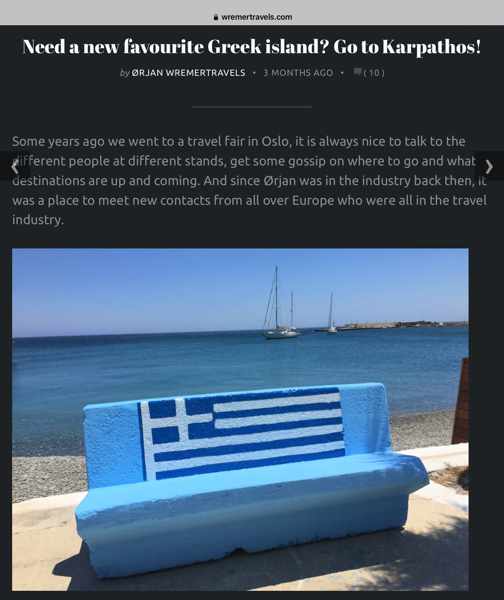
“A small piece of heaven” is how two travel bloggers from Norway, Tanja and Ørjan, describe Karpathos in an article published on their website, Wremer Travels, late last fall.
Their blog post Need a new favourite Greek island? Go to Karpathos! is a fun and informative read, explaining how the pair originally decided to visit Karpathos, and describing the beaches, food, villages and other features that have kept them coming back for more, including their favourite place to stay and their personal go-to spots for meals. The post includes a YouTube video of kitesurfing and windsurfing on Karpathos.
We enjoyed the article for its tips and helpful advice for first-time visitors — they offer some welcome words of wisdom for driving around — and especially for its wonderful photos of enticing beaches, coastlines, mountains, and Olympos, the most traditional village on the island.
_________________________
— Leros —
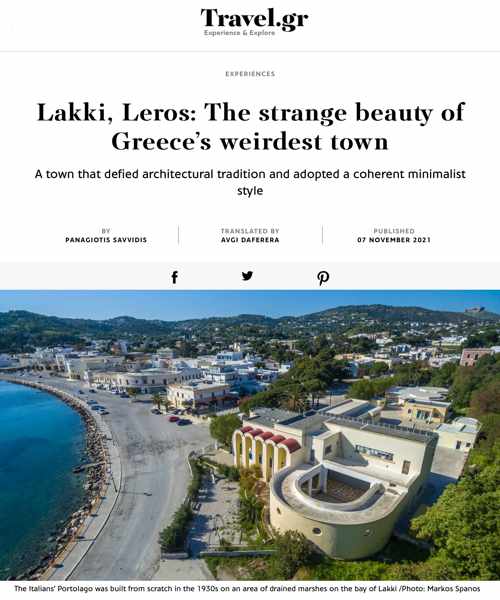
Architecture and design enthusiasts might feel inclined to pay Leros a visit once they see the photos and read the historic details in this fascinating article published on the Travel.gr website last November 2.
In Lakki, Leros: The strange beauty of Greece’s weirdest town, writer Panagiotis Savvidis examines how the seaside town of Lakki wound up with a curious collection of public buildings designed in minimalist achitectural styles, including Art Deco, Bauhaus, Venetian and Renaissance elements.
“According to studies, Lakki seems to be the place with the most Art Deco buildings in one place, after Miami,” he notes.
The structures, many of which are presenting in varying states of serious disrepair, are what Savvidis calls the island’s “inheritance” from the years during which the Italians ruled the Dodecanese. Since Lakki is blessed with the largest natural harbour in the eastern Mediterranean, it was a key component of Mussolini’s master plan to control the region. To that end, he ordered the construction of a new town, called Portolago, to house a massive base for the Italian navy. Besides military infrastructure, public buildings were required for administrative, medical and education services for the 30,000 military officers and families expected to live there. Prominent Italian architects were enlisted to design the settlement, and the result was the unique architecture, large squares and wide streets.
The article also notes how Thessaloniki-based film director Ioanna Asmeniadou-Fokka produced a recent documentary about Lakki’s history and architecture, and has been lobbying government to “to rescue, restore, and showcase the buildings.”
_________________________
— Kastellorizo —
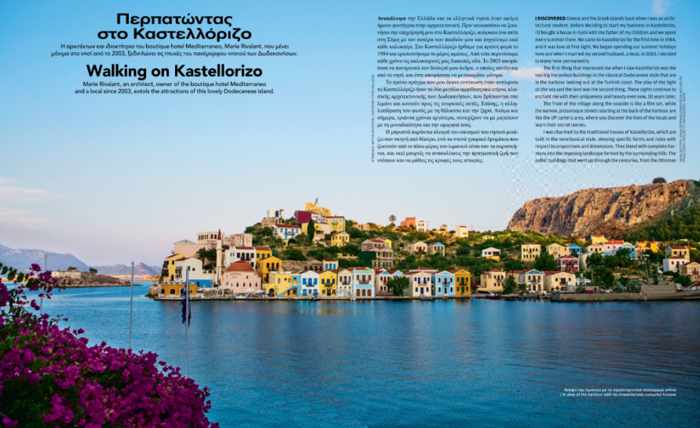
Walking on Kastellorizo is a 4-page article written for Aegean Airlines’ Blue magazine by architect, hotel owner and local resident Marie Rivalant, who “extols the attractions of this lovely Dodecanese island.”
Marie describes how the island’s charming sights — such as the buildings around the harbour and the homes designed in neoclassical style — made her fall in love with and decide to permanently live on Kastellorizo. Even after several decades, she notes that this same scenery continues to fascinate her, as do the island’s historic sites.
“Kastellorizo has an abundance of monuments that can guide visitors through the centuries,” she says, listing monasteries, museums, a castle and other not-to-be-missed attractions. Marie also mentions a few of her favourite walking routes, and explains why “one of the best ways to discover Kastellorizo, without doubt, is by boat.” She also recommends the island restaurants, bars and coffee shops that she enjoys the most.
Marie’s article can be found at page 254 of Blue magazine Issue 86.

“An island with more personality than square meters awaits visitors at the edge of the map,” says one of the pieces in Kastellorizo, a wonderful special edition magazine published in 2020 by Greece Is.
The issue is a definite must-read for anyone going to Kastellorizo, or even just thinking about paying it a visit sometime, since the 148 pages of this insightful publication are packed with fascinating feature articles and hundreds of gorgeous photos that describe and display virtually everything there is to know about the island. It’s inspiring, informative and educational — an absolute gem of an island guide (but that’s always the case with all of the Greece Is magazines, in our opinion).
Even if a trip to Kastellorizo isn’t on the horizon for you at this time, we think you’d probably find the magazine a delight to flip through simply to admire the beautiful colour images of island sights and scenery, as well as the intriguing black and white historic photos that accompany articles recounting significant moments in the island’s past.
If we had a copy of the print edition, we probably would leave it on our coffee table so we could peruse it more frequently, but we do look through the online version from time to time.
The web edition — Greece Is Kastellorizo 2020 — is available on issuu.com, and can be downloaded as a PDF. Print issues are available to order from the Greece Is e-shop.
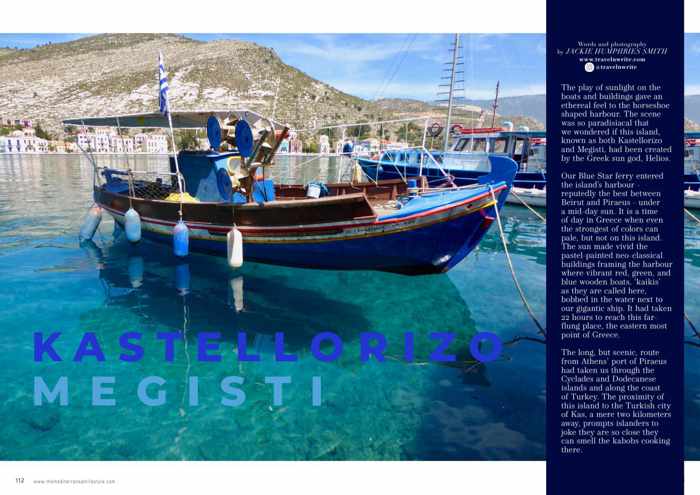
It’s “a small place with a big history,” it has two names, and it was “made for hikers and history buffs.” Located at the easternmost corner of Greece, it’s a little island called Kastellorizo by some, Megisti by others. By either name, it sounds absolutely delightful in the article freelancer writer Jackie Humphries Smith penned for The Mediterranean Lifestyle magazine last summer. And it has looks to match, as you’ll see in the beautiful photos, shot by Jackie, that accompany the story.
Jackie and her partner, Joel Smith, are American ex-pats who live in the Mani region of the Peloponnese, where Jackie writes the blog TravelnWrite.
[Editor’s Note: When we were preparing this blog post, Jackie’s feature piece on Kastellorizo / Megisti had been available to read for free on the issuu.com online magazine platform; Jackie’s own website included a link to her article there. But back issues of The Mediterranean Lifestyle appear to have been removed from that site, and are not shown as being available to order in either print or digital versions from the magazine website. You might be able to find the magazine at your local library; check to see if they have Issue 13 in their collection.]
_________________________
— Kalymnos —
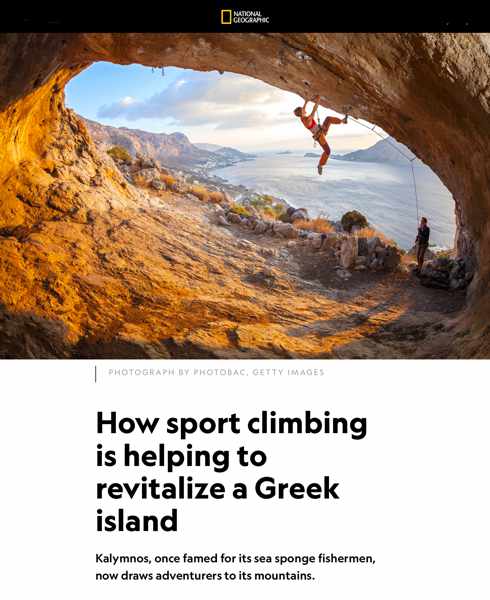
We found this July 28 2021 article from the UK edition of National Geographic an engaging and educational read, even though sport climbing on a Greek island mountainside isn’t something we could ever see ourselves doing on one of our holidays. Or maybe we could. According to writer Maria Atmatzidou, there are “easily accessible” climbing routes on Kalymnos that are suitable for beginners and even families, so there’s no reason novices like us couldn’t give the sport a try.
Maria’s article, How sport climbing is helping to revitalise a Greek island describes how Kalymnos has been capturing increased attention — and attracting holiday visits — from adventure seekers and outdoor enthusiasts around the world.
Maria explains how the island was left reeling by the decline and near-destruction of its traditional sponge fishing industry, but in recent years has extended its tourist season and become a top international draw not just for climbers, but also for “non-climbers who fish, dive or swim.”
Though not climbers ourselves, we became interested in Kalymnos after seeing the island’s amazing mountain and coastal scenery in videos we shared in our previous blog posts Kalymnos keeps calling in 2017, and Kalymos island rocks! in 2016. We still haven’t made it to the island yet, but we do hope to visit.

Red Bull Bulletin writer Matt Ray visited Kalymnos — the “magical corner of the Dodecanese” — to challenge his abilities on the cliffs and do some chalk-dusted first-hand research for his article, A beginner’s guide to sport climbing in Greece.
“Having gained a deserved reputation among elite climbers and enthusiasts, Kalymnos has a buzzing climbing scene. It’s chiefly centred around Masouri and its beach, but stretches across the whole island and beyond, taking in post-climb swims at ‘Pirate Beach’ (Kalamies) and extending to the crags of Telendos, an islet that sits off the west coast,” he notes.
Besides detailing the adrenalin rush of the climbs he undertook to improve his personal skills and techniques, Matt describes the “astounding” array of routes available on Kalymnos — 3,400 — and notes the island is ideal for solo climbers, since they’ll easily be able to find climbing partners on the island.
He also points out the added bonus to climbing on Kalymnos: the island’s amazing sea views and scenery are “all the sweeter” from the top.
_________________________
— Kos —
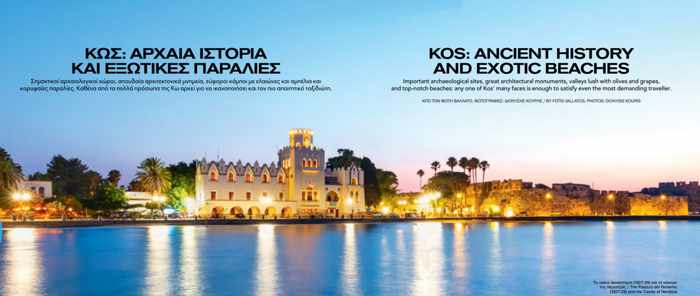
If you’re heading to Kos this year, we recommend you keep Kos: Ancient history and exotic beaches handy during your holiday. It’s an excellent 14-page island guide that appeared in the August – October 2021 edition (Issue 86) of Blue magazine, the in-flight publication of Aegean Airlines. Compiled and written by Fotis Vallatos, it contains a wealth of tips and suggestions for things to see and do, as well as places to shop, dine and drink. It’s also richly illustrated with three dozen enticing photos, by Dionysis Kouris, that show people, places, food and scenery from all over the island.
The guide includes a section on Kos Town, describing “majestic monuments of bygone times” — must-see archaeological sites, ancient ruins and the Castle of Neratzia — along with a list of nearly a dozen recommended “culinary stops,” plus cafes, cocktail bars and shops. For beach enthusiasts, the guide highlights top strands along the northern and southeastern coasts, as well as “the magical beaches” in the Kefalos area of southwestern Kos.
Another section suggests must-visit mountain villages, and tavernas where visitors can taste delicious local dishes. There also is a 1-page profile of local agricultural products, including cheese, wine, honey and organic aloe.
You’ll find the article on pages 238 – 251 at the link provided above. The full magazine is downloadable.
_________________________
— Rhodes & Kos —
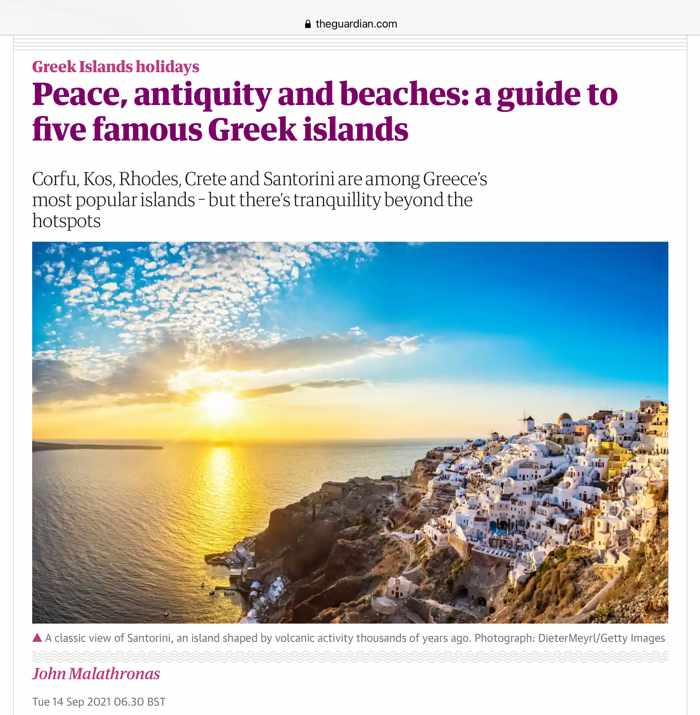
Rhodes and Kos are among the busiest and most popular destinations in Greece, but on both “there is tranquillity beyond the hotspots,” John Malathronas notes in Peace, antiquity and beaches: a guide to five famous Greek islands.
In his article, published September 14 2021 by The Guardian, John points out why Rhodes and Kos are tourist favourites, listing the top attractions and historic sites that draw hordes of visitors each season (for good reason). He then suggests quieter alternatives for visitors seeking places that are either off the beaten path, or that draw sparser crowds, while still offering unique experiences, great views and beautiful scenery.
John’s report also includes recommendations for places to stay, eat and drink on each island.
_________________________
— Rhodes —
Rhodes has long been one of the top Greek island destinations for international tourists, so we weren’t surprised when it made news headlines in late January for two separate but equally noteworthy achievements in the travel industry.
First, the island earned two accolades in the Trip Advisor Travelers’ Choice Awards for 2022, ranking at #3 in Trending Destinations — World — a category dedicated specifically to “places that are on the up and up,” and placing at # 11 in the Top Destinations for Sun Seekers — World group.
Rhodes was back in the news a second time in as many days when Greece’s South Aegean Region, in collaboration with TUI Group and the TUI Care Foundation, announced an ambitious initiative to transform the island into the world’s first sustainable tourism destination within the next five years. “The Rhodes Co-Lab” project aims to make Rhodes the global center for the study and development of sustainable models of tourism. Project details are outlined in the January 20 2022 Greek Travel Pages news report Rhodes begins 5-year journey to become first sustainable destination in the world.
Below are several mainstream magazine articles that explore Rhodes from the perspective of walking and cycling activities, luxury holidays and accommodations, and a “micro-living” vacation house.

We know from first-hand experience that Kos is one of the most bicycle-friendly islands in Greece — we rented bikes for a day during our visit to that island in 2010. But we couldn’t recall seeing any cyclists on Rhodes the one and only time we were there, way back in 2004. And we don’t remember hearing anything about cycling on Rhodes in the years since. So we were intrigued when we saw the November 2 2021 BIKE Magazine article Rhodes: Your next cycling destination.
The article was written by a journalist whose name, by pure coincidence, is Charlie Rhodes; he had been sent to the island for five days to report on the first-ever Rhodes Cycling Festival, and to observe a race held in conjunction with that event. He winds up being treated to “an unforgettable, authentically Greek week-long experience full of warm sun and breath-taking cycling spots,” and being pleasantly surprised by “just how utterly complete the island is as a cycling destination.” Calling Rhodes “a cycling haven,” he says “I simply cannot recommend the island enough – and this goes for those looking for leisure, as well as those who are in search of a true physical challenge.”
The article is a good read even for people not interested in biking, since the writer talks about villages and attractions he visited, and great places he discovered to eat and drink — including The Old Monolithos Taverna. His report includes photos as well as a brief videoclip of scenic Lindos village. A brief companion article on the Rhodes Bike Festival provides additional information about cycling on Rhodes, and includes a short video with aerial views of beautiful Rhodes Town.

“Rhodes boasts a plethora of paths that are perfect for hiking, mountain running and even mountain biking,” nature tour guide Giorgos Thyris says in Walking on Rhodes, an “Insider” article published in the June-August 2021 issue of Blue, the in-flight magazine of Aegean Airlines. “There are gems here, hidden beauties and unexploited Edens that only locals know, although they’re gradually being discovered by visitors, too.”
In his 4-page piece, which is illustrated with lovely scenic photos, Thyris provides vivid descriptions of several spectacular walking trails and hiking routes, and mentions some locations where rock climbing fans can challenge their skills. He also discusses such attractions as the Kournelo Cave and the Ancient Kymissala archaeology site, and explains why Rhodes is a popular destination for orchid enthusiasts from around the world.
You can read Thyris’s article by clicking on the link provided above; it will take you to the online version of Blue Issue 85, where you can download the full magazine to read at your leisure. Walking on Rhodes starts at page 220.
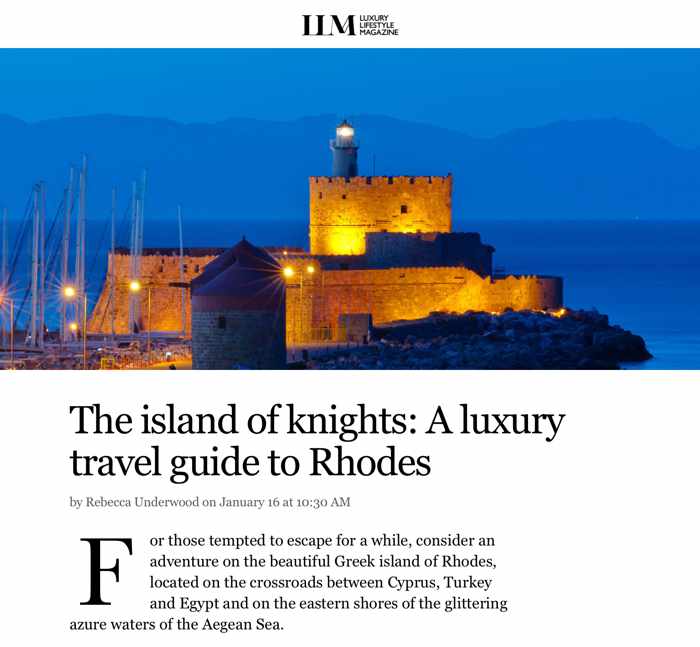
In a trip report published in January by Luxury Lifestyle Magazine, Rebecca Underwood recounts her experiences during a visit to Rhodes prior to the Covid pandemic. Though the article does spotlight a luxury hotel, it’s nonetheless a worthwhile read even for budget travellers since the writer describes visiting fascinating medieval sites and monuments, and the joy of simply wandering the ancient cobbled lanes of Rhodes Town, “Europe’s oldest inhabited medieval town” and a UNESCO World Heritage Site since 1988.
Besides the major attractions she visited, including the Palace of the Grand Master, Archaeological Museum, Acropolis of Rhodes and Temple of Pythian Apollo, Underwood describes her accommodations at the Kokkini Porta Rossa boutique hotel and a meal at the family-owned bistro, Tamam, on Georgiou Leontos Street.
Her report, The island of knights: A luxury travel guide to Rhodes, also includes additional restaurant recommendations as well as suggestions for interesting things to see and do outside of Rhodes Town.

If your personal travel lifestyle and accommodation preferences lean toward 5-star luxury resorts, you’ll want to read this article when you research places to stay for an upcoming trip to Rhodes.
Rhodes: Where the sun god reigns supreme is primarily a report on the 5-star Amada Colossos Resort, which MoneyWeek’s wealth editor, Chris Carter, stayed in last October. His write-up was published on February 4.
The article caught our attention because the Amada Colossos is located in Kallithea on the eastern coast of Rhodes, just a short walk down the beach from the hotel we stayed in during our one-and-only trip to the island 18 years ago — the Rodos Palladium. It, too, is a 5-star hotel, so we were curious to read how the Amada Colossos compares.
Chris was booked into a luxurious executive suite, which boasted a living room and separate bedroom, along with a spacious modern bathroom that featured a sea-view window. He describes the suite’s features, of course, as well as the resort’s impressive selection of bars and restaurants, which include a main buffet dining room, and separate Greek, Italian and Chinese restaurants. The resort also has a spa, as well as luxury villas with private pools and access to personal gazebos on the beach.
As Chris points out, the hotel reopened in 2018 after undergoing a major renovation and systems overhaul, highlighted by the addition of environmentally sustainable heating and cooling features, and a re-orientation of the suites to offer better views of the sea.
Besides the hotel, Chris talks about some of the noteworthy attractions in the immediate area and in nearby Rhodes Town, and recommends a “wonderful” taverna situated a 20-minute drive from away.
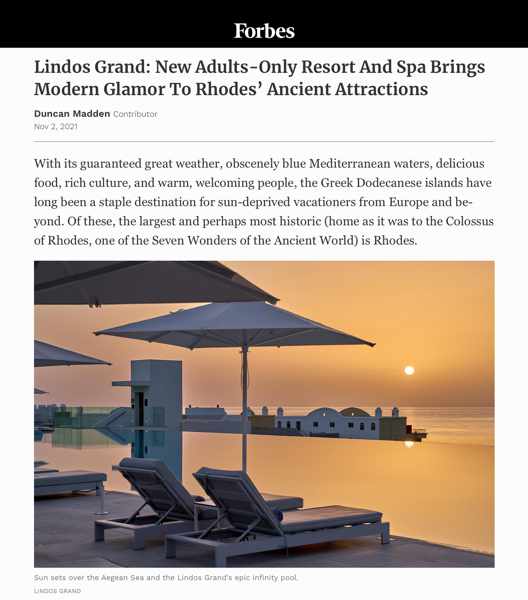
Yet another Rhodes luxury hotel, the Lindos Grand Resort & Spa, has been profiled in travel media recently — by publications aimed at two completely different readership markets.
First up was business, marketing and investment publisher Forbes, whose lifestyle writer Duncan Madden describes the resort’s many impressive features in his November 2 2021 report, Lindos Grand: New adults-only resort and spa brings modern glamor to Rhodes’ ancient attractions.
Madden notes that the Covid pandemic led the 189-room resort to delay its opening until July of last year, although some of its amenities — including a la carte restaurants — won’t open until this season.
Though large in size, the resort was thoughtfully designed to match the look and feel of buildings in nearby Lindos village, Madden says. “Structures seemingly tumble down the hillside towards the sea, scattered carefully in close-knit clusters around the star of the show – a vast open air infinity pool, one of the largest in Rhodes, that beckons guests in with lingering views over the beach at Vlycha and Aegean Sea beyond stretching far to the horizon.”
He goes on to detail the interior design features and amenities of the suites, many of which boast L-shaped private pools, and describes the resort restaurants and its Evridiki Spa. He also recommends noteworthy historic sites that guests should be sure to visit both in Lindos and in Rhodes Town.

The U.K. edition of Hello! Fashion followed with its own profile of the Lindos Grand.
In An Island Idyll, published in the December / January issue, the magazine says “The incredibly picturesque hillside village of Lindos and its nearby bays make Rhodes the perfect Greek getaway from spring to autumn.”
The article, written by Jill Wanless, recommends staying at the Lindos Grand, which she describes as “a stylish haven of relaxation” and “contemporary, eco-friendly hotel.” She goes on to describe highlight features of the accommodations, and the restaurants and spa, noting the resort is “the perfect retreat for two or a girls’ getaway.”
For things to do beyond the resort, Jill suggests things to see and do in Lindos, as well as activities and sights — including vineyards — elsewhere on the island.
We read the article on Apple News, but have seen that the Hello! Fashion issue is available through Zinio and other online magazine services

If sprawling luxury resorts and big hotels aren’t your style, perhaps a hip little hideaway might be perfect for your visit to Rhodes.
The Monocabin is a miniature holiday home only 26 square meters in size. It’s an innovative, modular housing prototype which Mandalaki Design Studios developed in pursuit of a vision to create an “affordable dream eco-house” that could be built almost anywhere in the world.
We learned about the cute and cozy Microcabin when we came across the article Holiday home of the week: a Monocabin for micro-living in Greece while scrolling through The Spaces magazine online.
“Constructed using modular concrete panels that manage to look both modern while blending with the traditional architecture of the island, the Monocabin sleeps two people in close but cosy quarters. Inside there is the kitchen, bathroom and bedroom, while the outside terrace doubles as both sitting and dining room – Rhodes’ sunny climate makes eating outside the easy choice – as well as offering a work out area around the side,” notes writer Tish Wrigley.
The Monocabin is located in the town of Ialysos just 200 meters from the beach, and is available for holiday rentals, with a minimum 3 nights’ stay required. Full details about the concept house project, and contact information for booking inquiries, can be found on the Monocabin website.
